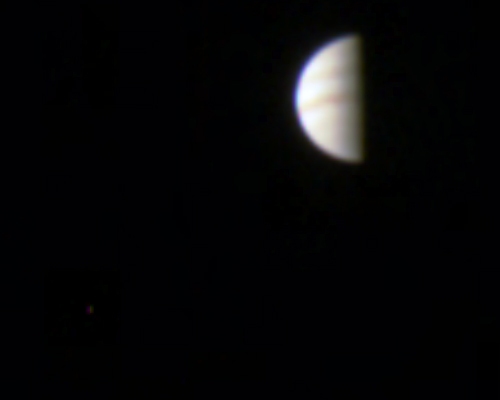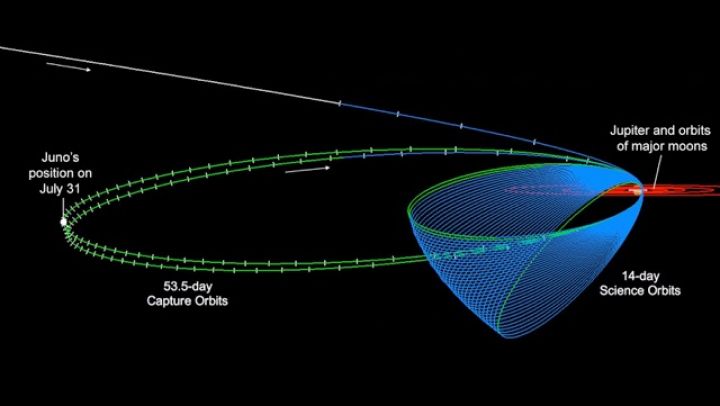It looks like you're using an Ad Blocker.
Please white-list or disable AboveTopSecret.com in your ad-blocking tool.
Thank you.
Some features of ATS will be disabled while you continue to use an ad-blocker.
share:
originally posted by: wildespace
One of the images from the approach phase, created by Gerald from the UMSF forum, and colour-balanced by me:
Also, today Juno reached the furthest point in the first of its two "capture orbits" around Jupiter.
Five years after departing Earth, and a month after slipping into orbit around Jupiter, NASA's Juno spacecraft is nearing a turning point. On July 31 at 12:41 p.m. PDT (3:41 p.m. EDT), Juno will reach the farthest point in its orbit of Jupiter for the first time, known as “apojove,” 5 million miles (8.1 million kilometers) from the giant planet. After that point, Jupiter's gravitational grip on Juno will cause the spacecraft to begin falling back toward the planet for another pass, this time with its scientific eyes wide open.
www.missionjuno.swri.edu...
Following the capture orbits, Juno will fire its engine once more to shorten its orbital period to 14 days and begin its science mission.
But before that happens, on Aug. 27, Juno must finish its first lap around Jupiter, with a finish line that represents the mission's closest pass over the gas giant. During the encounter, Juno will skim past Jupiter at a mere 2,600 miles (4,200 kilometers) above the cloud tops.
Not long left now, and in less than a month we'll get some stunning close-up images!
Wow..that orbit is nuts.
Ok..im going to ask a question which might be idiotic. But wouldn't an elliptical orbit like this require some propulsion correction from junos part to insert it back into orbit after each pass.
originally posted by: 3danimator2014
Ok..im going to ask a question which might be idiotic. But wouldn't an elliptical orbit like this require some propulsion correction from junos part to insert it back into orbit after each pass.
Not an idiotic question at all, this stuff is fascinating.
Jupiter is such a massive beast that even with those gigantic orbits, Jupiter's gravity is what will make Juno "fall" back towards it and keep making those looping orbits. Juno will perform a "burn" at the end of August to settle itself into the "science orbits".
originally posted by: wildespace
originally posted by: 3danimator2014
Ok..im going to ask a question which might be idiotic. But wouldn't an elliptical orbit like this require some propulsion correction from junos part to insert it back into orbit after each pass.
Not an idiotic question at all, this stuff is fascinating.
Jupiter is such a massive beast that even with those gigantic orbits, Jupiter's gravity is what will make Juno "fall" back towards it and keep making those looping orbits. Juno will perform a "burn" at the end of August to settle itself into the "science orbits".
That's incredible. Wow. Orbital mechanics. Fairly simple but still amazing.
Thanks for the reply mate
Juno is acquiring images for another movie now, the "Marble Movie," on approach to its August 27 perijove. Yesterday, the mission posted nearly 900
Megabytes of raw data from the Marble Movie on the JunoCam processing website:
www.planetary.org...
So stay tuned for more images and time-lapses.
The raw images are quite tricky to assemble into ordinary colour images, and at this stage Jupiter still looks tiny in the camera frame.
UMSF discussion of the Marble Movie is here: www.unmannedspaceflight.com...
Here's one of the movie's frame, created by Gerald and colour-balanced and flipped the right way up by me:
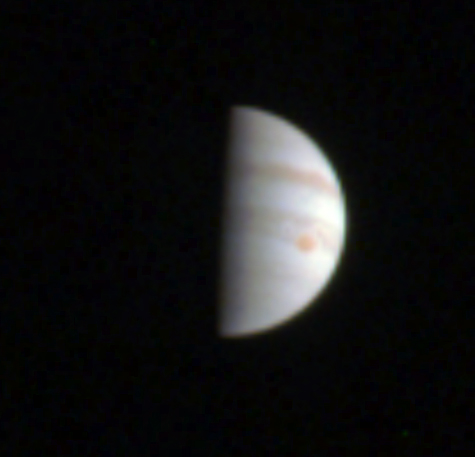
(Jupiter in these images and animations is enlarged, that's why it looks so blurry)
So stay tuned for more images and time-lapses.
The raw images are quite tricky to assemble into ordinary colour images, and at this stage Jupiter still looks tiny in the camera frame.
UMSF discussion of the Marble Movie is here: www.unmannedspaceflight.com...
Here's one of the movie's frame, created by Gerald and colour-balanced and flipped the right way up by me:

(Jupiter in these images and animations is enlarged, that's why it looks so blurry)
edit on 10-8-2016 by wildespace because: (no reason
given)
So thats pretty neat, anyone can play with the raw images and submit stuff. Very cool.
originally posted by: 3danimator2014
Ok..im going to ask a question which might be idiotic. But wouldn't an elliptical orbit like this require some propulsion correction from junos part to insert it back into orbit after each pass.
Actually, Juno would need to use more propulsion to achieve a circular orbit than the elliptical orbits you see in the picture. Most artificial satellite orbits and the orbits of all of the natural planets and satellites in the solar system are elliptical (although some are very close to circular, in cosmic terms). Artificial satellites that have circular orbits, like communications satellites in geosynchronous orbit, need to perform at least one (sometimes several) engine burns at apogee (the point where they are furthest away from the object they are orbiting) in order to circularize their orbits. There is a fairly straightforward explanation here.
There is also an interesting video describing Kepler's 1st Law of Planetary Motion - that natural planets and satellites have elliptical orbits - here:
originally posted by: 3danimator2014
So thats pretty neat, anyone can play with the raw images and submit stuff. Very cool.
Yes, that's been the case for almost any NASA spacecraft that has photographed planets, moons and asteroids. For me, most of such work is too complicated, but I did make a few images from PDS, and quite a few from Cassini raw images.
Here's a few of mine from Cassini:
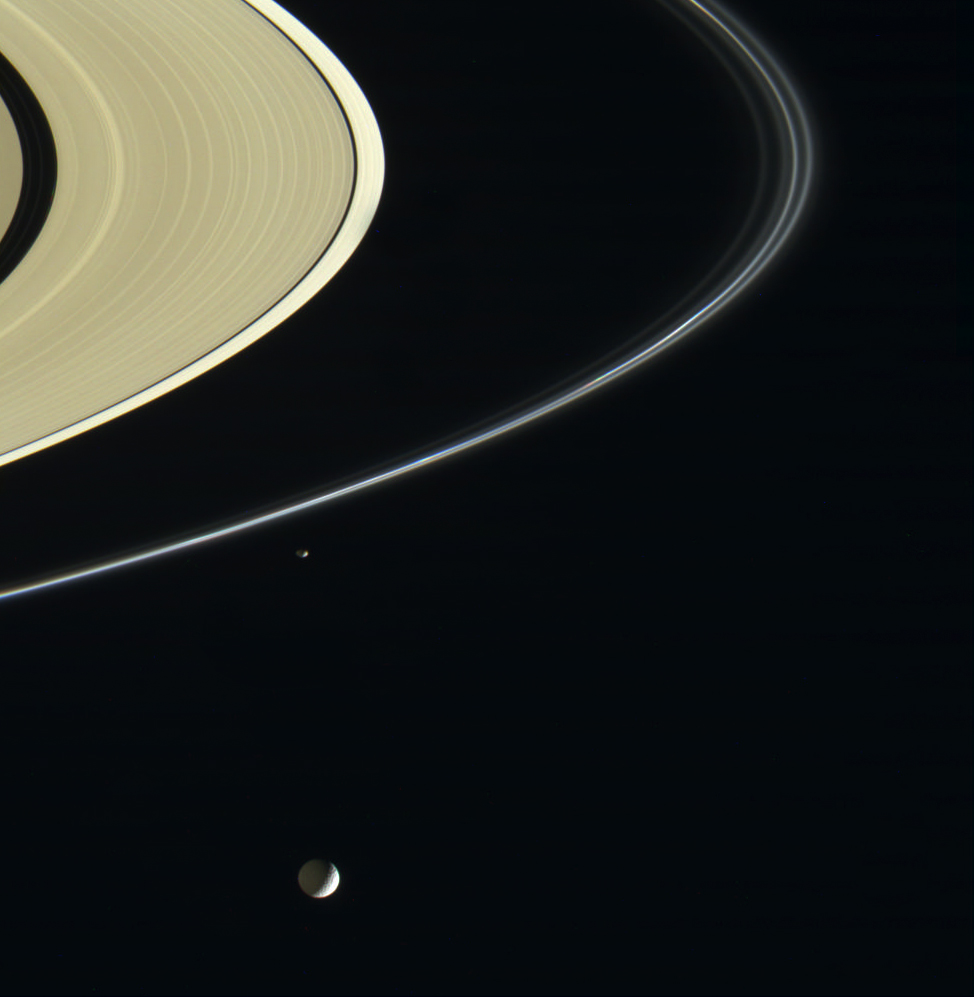
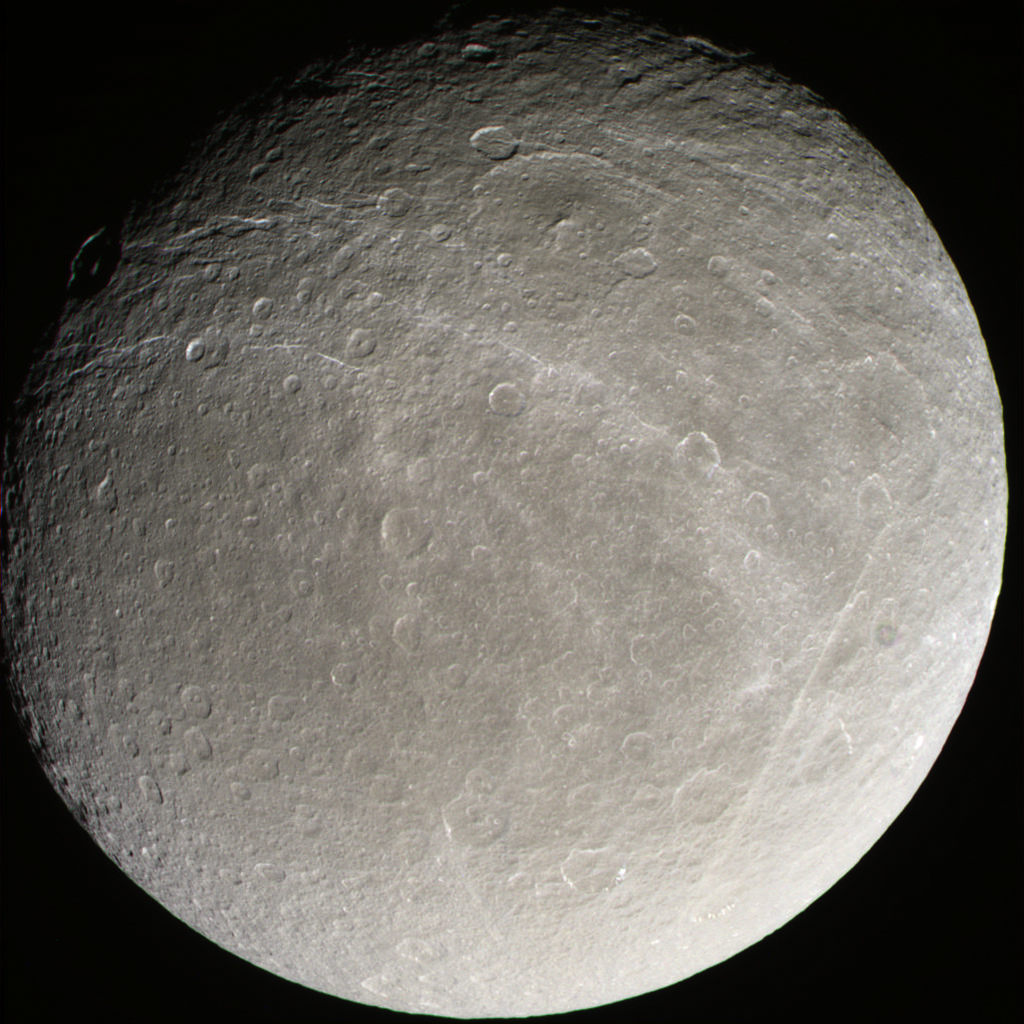
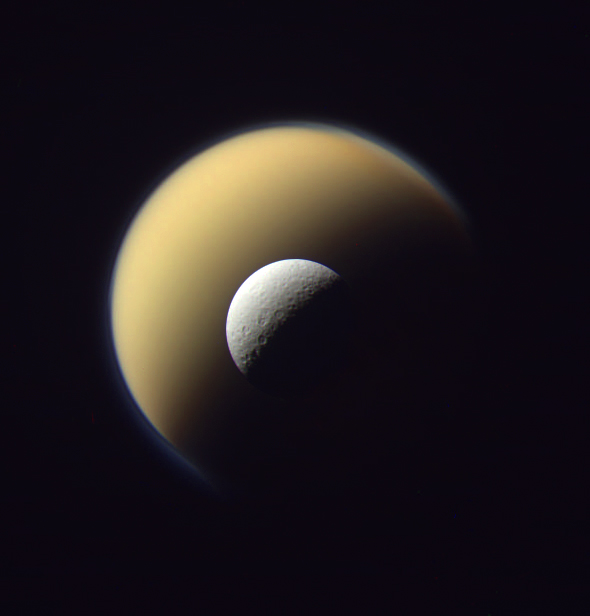
originally posted by: PhloydPhan
originally posted by: 3danimator2014
Ok..im going to ask a question which might be idiotic. But wouldn't an elliptical orbit like this require some propulsion correction from junos part to insert it back into orbit after each pass.
Actually, Juno would need to use more propulsion to achieve a circular orbit than the elliptical orbits you see in the picture. Most artificial satellite orbits and the orbits of all of the natural planets and satellites in the solar system are elliptical (although some are very close to circular, in cosmic terms). Artificial satellites that have circular orbits, like communications satellites in geosynchronous orbit, need to perform at least one (sometimes several) engine burns at apogee (the point where they are furthest away from the object they are orbiting) in order to circularize their orbits. There is a fairly straightforward explanation here.
There is also an interesting video describing Kepler's 1st Law of Planetary Motion - that natural planets and satellites have elliptical orbits - here:
Sure, I knew the the planets orbits are elliptical, but I assumed the sun was at the centre of that ellipse. Never gave that particular point much thought tbh. Just assumed.
What I can't get my head round re: Juno is the the orbit is wildly off centre. I know it works, clearly it does, but my brain can't quite see how that orbit, with the pass nearest to Jupiter that close, is in equilibrium.
Again, I understand that it is, just seems odd.
I'll watch your video on the next render I do. Thank you for the links and info. Fascinating stuff.
originally posted by: wildespace
originally posted by: 3danimator2014
So thats pretty neat, anyone can play with the raw images and submit stuff. Very cool.
Yes, that's been the case for almost any NASA spacecraft that has photographed planets, moons and asteroids. For me, most of such work is too complicated, but I did make a few images from PDS, and quite a few from Cassini raw images.
Here's a few of mine from Cassini:
Oh my..that first image is absolutely breathtaking mate. Gorgeous...
I wasnt aware that these raw images were all available to use. Really beautiful work.
I will be very sad to see the Cassini mission end next year (?), it must surely rank as one of NASAs most succesful long term missions.
Again, amazing word dude. Thanks for sharing
As part of the Marble Movie, you can now "hitch a ride" aboard Juno as it receded from Jupiter on the first of it's long "capture orbits" around the
planet:
www.youtube.com...
www.youtube.com...
Animation composed of 860 images from JunoCam taken between July 10 and 19, 2016, as Juno receded from Jupiter on its first long orbit.
Data: NASA / JPL / SwRI / MSSS. Processing: Gerald Eichstaedt
And there we have it, the first upclose image of Jupiter from JunoCam:
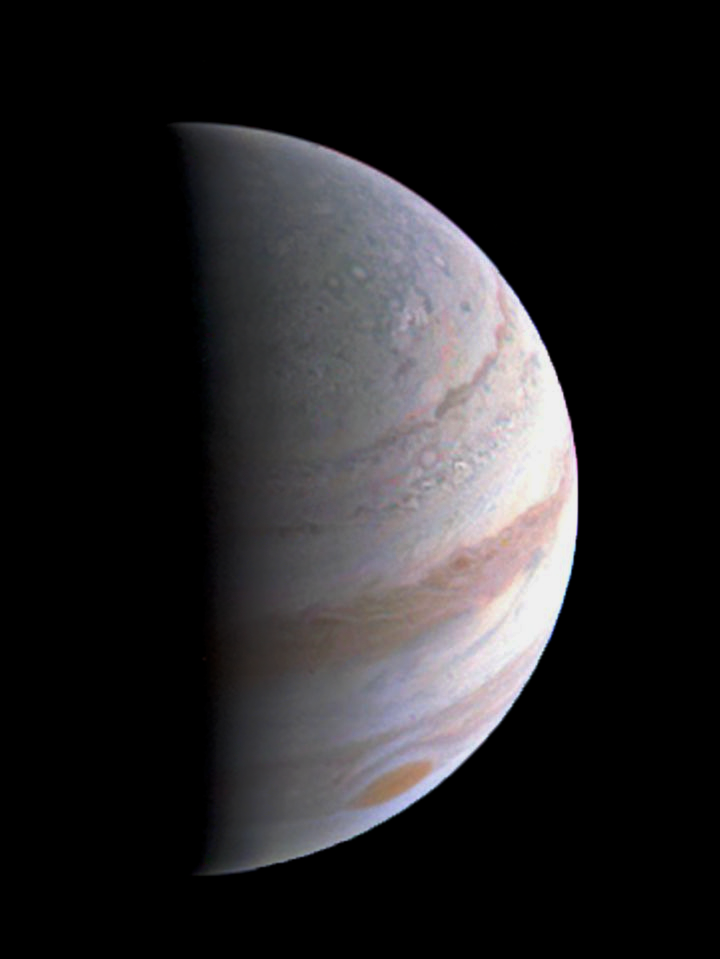
www.planetary.org...

NASA's Juno mission successfully executed its first of 36 orbital flybys of Jupiter today. The time of closest approach with the gas-giant world was 6:44 a.m. PDT (9:44 a.m. EDT, 13:44 UTC) when Juno passed about 2,600 miles (4,200 kilometers) above Jupiter's swirling clouds. At the time, Juno was traveling at 130,000 mph (208,000 kilometers per hour) with respect to the planet. This flyby was the closest Juno will get to Jupiter during its prime mission.
"Early post-flyby telemetry indicates that everything worked as planned and Juno is firing on all cylinders," said Rick Nybakken, Juno project manager....
While results from the spacecraft's suite of instruments will be released down the road, a handful of images from Juno's visible light imager -- JunoCam -- are expected to be released the next couple of weeks. Those images will include the highest-resolution views of the Jovian atmosphere and the first glimpse of Jupiter's north and south poles.
www.planetary.org...
Any one else notice Juno looks like a bone charm from the game Dishonored?
Love these kind of missions. We get to see the planets up close and personal.
Love these kind of missions. We get to see the planets up close and personal.
a reply to: wildespace
NASA has some great artists working for them now?
Looks like oil on canvas, I'm just missing all the texture.
Couldn't believe it, but yes:
www.nasa.gov...
Actual picture, allegedly. Nice painting anyway. WTH?
Funny times, thanks for the update!
NASA has some great artists working for them now?
Looks like oil on canvas, I'm just missing all the texture.
Couldn't believe it, but yes:
This view of Jupiter was taken on August 27, when Juno was 437,000 miles (703,000 kilometers) away.
www.nasa.gov...
Actual picture, allegedly. Nice painting anyway. WTH?
Funny times, thanks for the update!
a reply to: PublicOpinion
Please, just come out and say they are fake. There is nothing charming in making your pretense. Why do you want people to think they are fake?
Please, just come out and say they are fake. There is nothing charming in making your pretense. Why do you want people to think they are fake?
a reply to: DJW001
Why should I?
Just say it doesn't look like a painting to you and I'd say you're probably not a a painter at all. We've had a gamer so far with similar thoughts. So what? You people, eh? Why do I think you people always come across like a complete and utter Dick Cheney?
Go and lecture someone about Vlads war in Ukraine or something? Fun with fine (f)arts, take it easy and carry on!
Why should I?
Just say it doesn't look like a painting to you and I'd say you're probably not a a painter at all. We've had a gamer so far with similar thoughts. So what? You people, eh? Why do I think you people always come across like a complete and utter Dick Cheney?
Go and lecture someone about Vlads war in Ukraine or something? Fun with fine (f)arts, take it easy and carry on!
a reply to: PublicOpinion
Images from space these days look like digital art because they are digital art. Data is transmitted in digital form, then processed into images. These images are naturally tweaked for any number of reasons. I will assume you know that. I'm terribly sorry if the Russians haven't been able to get anything past near Earth orbit since the 1970s... that's no reason to mount a whispering campaign against NASA. If this keeps up, people will be pointing out that there is no evidence that Yuri Gagarin was actually in Vostok 1, and that Alexey Arkhipovich's space walk looks like it was filmed in a swimming pool. (Pot, meet kettle.)
Images from space these days look like digital art because they are digital art. Data is transmitted in digital form, then processed into images. These images are naturally tweaked for any number of reasons. I will assume you know that. I'm terribly sorry if the Russians haven't been able to get anything past near Earth orbit since the 1970s... that's no reason to mount a whispering campaign against NASA. If this keeps up, people will be pointing out that there is no evidence that Yuri Gagarin was actually in Vostok 1, and that Alexey Arkhipovich's space walk looks like it was filmed in a swimming pool. (Pot, meet kettle.)
a reply to: DJW001
That's something to agree upon, well done. Cheers for the Pot though, scrap the kettle!
Hirasawa-74 already adjusted the picture, I like it.
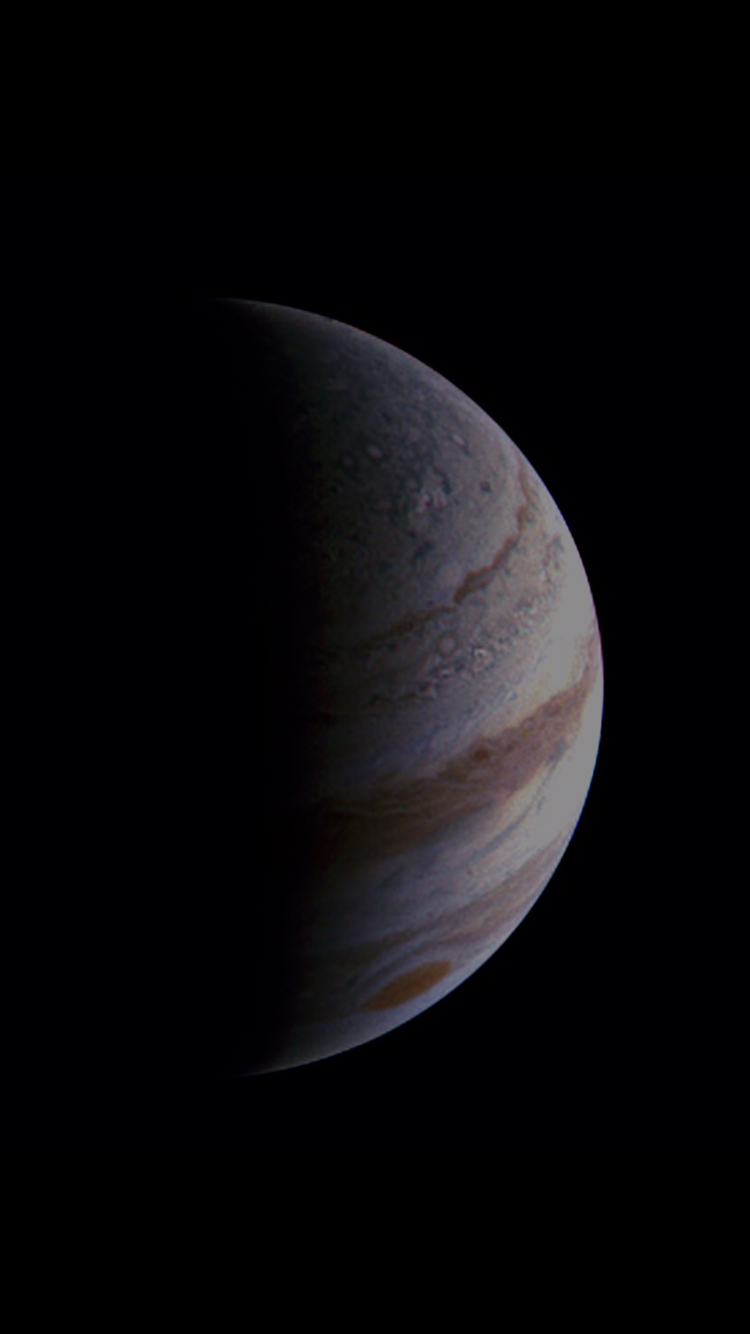
www.missionjuno.swri.edu...
Looks like a great source for more to come.
That's something to agree upon, well done. Cheers for the Pot though, scrap the kettle!
Hirasawa-74 already adjusted the picture, I like it.

www.missionjuno.swri.edu...
Looks like a great source for more to come.
originally posted by: PublicOpinion
a reply to: wildespace
Looks like oil on canvas
Perhaps, but it's a picture painted by nature and physics.
What, in your opinion, a real photo of Jupiter should look like?
Crying "fake!" at anything is easy; specifying why it looks fake, and specifying what the real deal should look like, is the hard part.
new topics
-
Cold Blooded Killers on Christmas!! GRRRRrrr!!
Pets: 3 hours ago -
Plane Crash Today --Azerbaijanian E190 passenger jet
Mainstream News: 8 hours ago
top topics
-
Orange County Makes Shoplifting a Felony
Other Current Events: 12 hours ago, 17 flags -
It's Offical Now
US Political Madness: 14 hours ago, 15 flags -
The reason it works is.....
General Chit Chat: 15 hours ago, 8 flags -
Dick Van Dyke saved from Wildfire by neighbours on his 99th birthday
People: 17 hours ago, 7 flags -
Cold Blooded Killers on Christmas!! GRRRRrrr!!
Pets: 3 hours ago, 7 flags -
Plane Crash Today --Azerbaijanian E190 passenger jet
Mainstream News: 8 hours ago, 6 flags
active topics
-
Statements of Intent from Incoming Trump Administration Members - 2025 to 2029.
2024 Elections • 54 • : WeMustCare -
DefCon Teetering on Escalation
World War Three • 51 • : WeMustCare -
-@TH3WH17ERABB17- -Q- ---TIME TO SHOW THE WORLD--- -Part- --44--
Dissecting Disinformation • 3813 • : WeMustCare -
1 Billion dollars
General Entertainment • 13 • : ColeYounger2 -
Cold Blooded Killers on Christmas!! GRRRRrrr!!
Pets • 6 • : rickymouse -
Plane Crash Today --Azerbaijanian E190 passenger jet
Mainstream News • 12 • : rickymouse -
It's Offical Now
US Political Madness • 15 • : Imhere -
Political Warfare & The Resister Special Forces Underground
Political Ideology • 2 • : NoCorruptionAllowed -
London Christmas Market BANS Word ‘Christmas’
Social Issues and Civil Unrest • 49 • : NorthOS -
Post A Funny (T&C Friendly) Pic Part IV: The LOL awakens!
General Chit Chat • 7956 • : KrustyKrab

